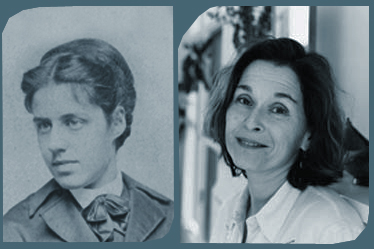


and the circumstances of my life have led me somewhat apart from my people.” Although her family did belong to the Sephardic Shearith Israel synagogue in New York, and she did write “In the Jewish Synagogue in Newport” when she was young, it appears that learning of the Russian pogroms in the early 1880s kindled Lazarus’s commitment to Judaism. Until this period, Lazarus’s “interest and sympathies were loyal to race,” but, as she explained in 1877, “my religious convictions. This was also the period in which Lazarus most obviously spoke out as self-identified Jew and American writer simultaneously. In addition to numerous magazine poems, essays, and letters, she published a highly respected volume of translations, Poems and Ballads of Heinrich Heine, in 1881, and Songs of a Semite: The Dance to Death and Other Poems, in 1882. Lazarus’s most productive period was the early 1880s. Among these are “Outside the Church” (1872) in Index “Phantasmagoria” (1876) and “The Christmas Tree” (1877) in Lippincott’s “The Taming of the Falcon” (1879) in the Century and “Progress and Poverty” (18 8 1) in the New York Times. Throughout the 1870s and early 1880s, Lazarus’s poems appeared in American magazines.

In 1876, Lazar-us privately published The Spagnoletto, a tragic verse drama. The story raises questions about the needs and rights of the artist, like Alide, and about the status of American art, like “How Long.”
Emma lazarus free#
The lovers part at the end, because the poet must be free to fulfill his “sacred office.” Lazarus’s only other piece of fiction, a story titled “The Eleventh Hour,” was published in 1878 in Scribner’s. Her only novel, Alide is based on Goethe’s own autobiographical writings and focuses on a love affair between the young Goethe and a country woman. Lazarus published her next book, Alide: An Episode of Goethe’s Life, in 18 74. “How Long” is significant because its proclamation of the need for a “yet unheard of strain,” one suitable to prairies, plains, wilderness, and snow-peaked mountains places Lazarus among those mid-nineteenth century American writers who wanted to create literature that did not depend on British outlines. “In the Jewish Synagogue at Newport” echoes in form and meter Henry Wadsworth Longfellow’s “The Jewish Cemetery at Newport.” Yet where Longfellow’s meditation closes with “the dead nations never rise again,” Lazarus’s reverie concludes by announcing that “the sacred shrine is holy yet.” “In the Jewish Synagogue at Newport” is one of Lazarus’s earliest creative expressions of a Jewish consciousness. However, student and mentor obviously reconciled in 1876, Lazarus visited the Emersons in Concord, Massachusetts.Īdmetus and Other Poems includes “In the Jewish Synagogue at Newport” and “How Long” as well as translations from the Italian and German (Goethe and Heine). Lazarus responded with an uncharacteristically angry letter and subsequently modified her idealized image of Emerson. In 1871, when she published Admetus and Other Poems, she dedicated the title poem “To My Friend, Ralph Waldo Emerson.” Despite his support, Emerson failed to include any of Lazarus’s poetry in his 1874 anthology, Parnassus, but he did include authors such as Harriet Prescott Spofford and Julia C.R. During the early years of their relationship, Lazar-us turned to Emerson as her mentor, and he in turn praised and encouraged her writing. The two corresponded until Emerson’s death in 1882. Soon after Poems and Translations was published, Lazarus met Ralph Waldo Emerson. In 1866, when Emma was only seventeen, Moses had Poems and Translations: Written Between the Ages of Fourteen and Sixteen printed “for private circulation.” Daughter Emma dedicated the volume “To My Father.” Her father, who was a successful sugar merchant, supported her writing financially as well as emotionally. She grew up in New York and Newport, Rhode Island, and was educated by private tutors with whom she studied mythology, music, American poetry, European literature, German, French, and Italian. “Give me your tired, your poor, / Your huddled masses yearning to breathe free,” proclaims the “Mother of Exiles” in Emma Lazarus’s sonnet “The New Colossus.” Her best-known contribution to mainstream American literature and culture, the poem has contributed to the belief that America means opportunity and freedom for Jews, as well as for other “huddled masses.” Through this celebration of the “other,” Lazarus conveyed her deepest loyalty to the best of both America and Judaism.īorn on July 22, 1849, Lazarus was the fourth of Esther (Nathan) and Moses Lazarus’s seven children.


 0 kommentar(er)
0 kommentar(er)
